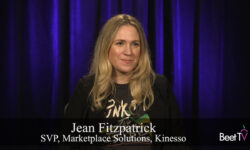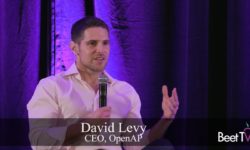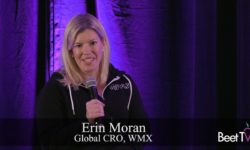After a “golden” era of connected, subscription TV, a new wave of ad-supported service is emerging – but ad buyers need to catch up.
That is the view of one ad-tech exec working on ushering in new formats and new ad currencies.
In this video interview with Beet.TV, TripleLift’s Michael Shields explains how the opportunity is changing.
FAST’s new wave
Shields says it’s not all about Netflix anymore – a new crop of free, ad-supported TV (TV) service is changing the game.
He cites the likes of Kidoodle, Tastemade, Canela and Whistle TV, which can distribute through platforms like Pluto TV, Samsung TV Plus and Roku Channel.
“We are really seeing subscription fatigue,” Shields says.
“We’re seeing people top out at maybe four or five paid for services, and then gravitating and doing a lot of viewing in these FAST channels.”
Tooling-up
But, Shields says, ad buyers are not yet configured for the new opportunity.
“We need to make sure that the buy side is structured and resourced appropriately to understand that opportunity, and they’re able to measure it across all those different publishers,” he says.
“Right now, I don’t think that video investment teams necessarily have all the resources in place to understand what that opportunity is, and where it provides the ability to reach new audiences and find incremental reach.”
US connected TV advertising will approach 60% growth by year-endhttps://t.co/qlkT9wXHHW thanks @emarketer #CTV #OTT #videoadvertising https://t.co/T4mtffF6tm
— Alex Panhans (@AlexEP34) November 22, 2021
The trouble, he says, is that agencies have historically been configured to buy in top-tier environments. Now, there is a growing school of thought that some of the more attractive destinations are in the middle.
“I think we do need to evolve as well perhaps on the buy side is the ability to reach the mid and long tail,” Sheilds says.
“If you’re an agency, you might have your representative that deals with Hulu, that deals with YouTube, that deals with NBC Universal. But there are a ton of emerging publishers in CTV.”
Reformatting formats
But the solution doesn’t just lay with buyers, Shields says.
“It really requires everyone on the supply side to get together to enable the same data partnerships that allow for media planning and buying,” he reckons.
TripleLift is doing its bit in that regard, using a mix of machine learning.
TripleLift’s original technology lets a brand can take a single set of creative assets and turn them into tens of thousands of unique native ads, each one tailored to each specific publisher.
Now it is developing a host of new ad formats for TV companies to offer, including:
- Overlay in the lower third of a content stream.
- In-action Six AKA ‘Squeeze-back’ – “During a natural break in the programming, we’ll squeeze back the content, play an ad side-by-side. That experience is being used by a lot of the major networks now for sports and the like.”
- Brand Insertions – “On a flat surface, like a digital billboard, we’ll insert a picture of a brand into an existing television stream in a post-production way.”
- Product Insertion – “A show owner will send us a show, we’ll scan it and, using AI and machine learning, detect where the opportunities are to insert 3D objects into the stream.”
Artificial intelligence
“We take all of the shows from our partners, and we use a variety of machine learning modules to analyse those shows,” adds TripleLift’s Shields.
“We do computer vision image and surface recognition to understand where we might do an insertion in a show. We also do natural language processing of the closed captions.”
“Now we know the right place to do an insertion and a place where consumer attention is going to be focused, and where we know it’s going to be effective for an advertiser. Then we use a variety of automated visual effects tools that we’ve created to do that kind of 2D, 3D object insertion.”
You are watching coverage from Beet Retreat Santa Monica 2021, presented by FreeWheel, IRIS.TV, Samba TV, TransUnion & Warner Music Group. For more videos, please visit this page.














































